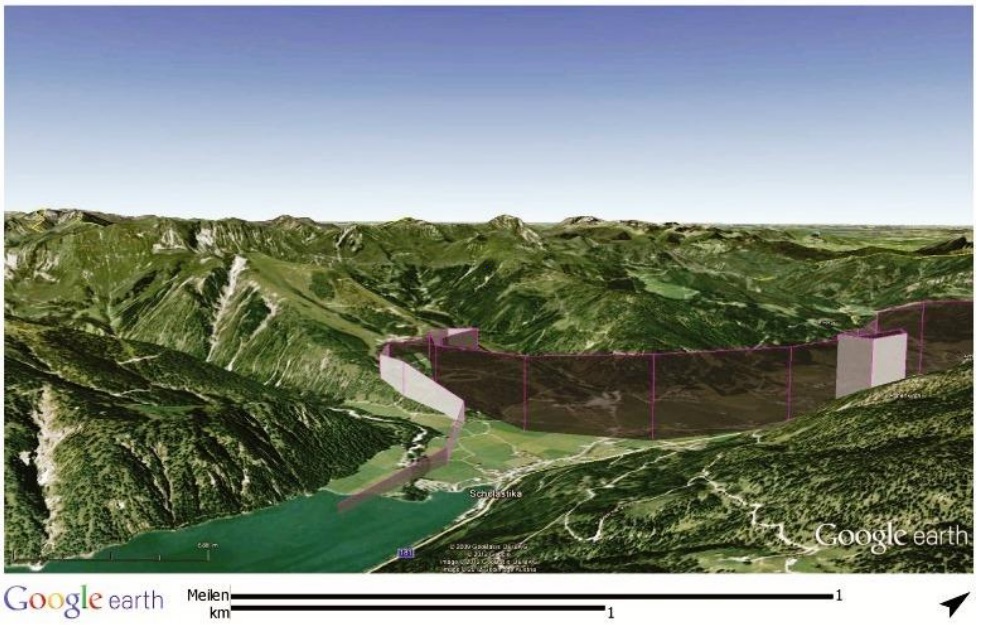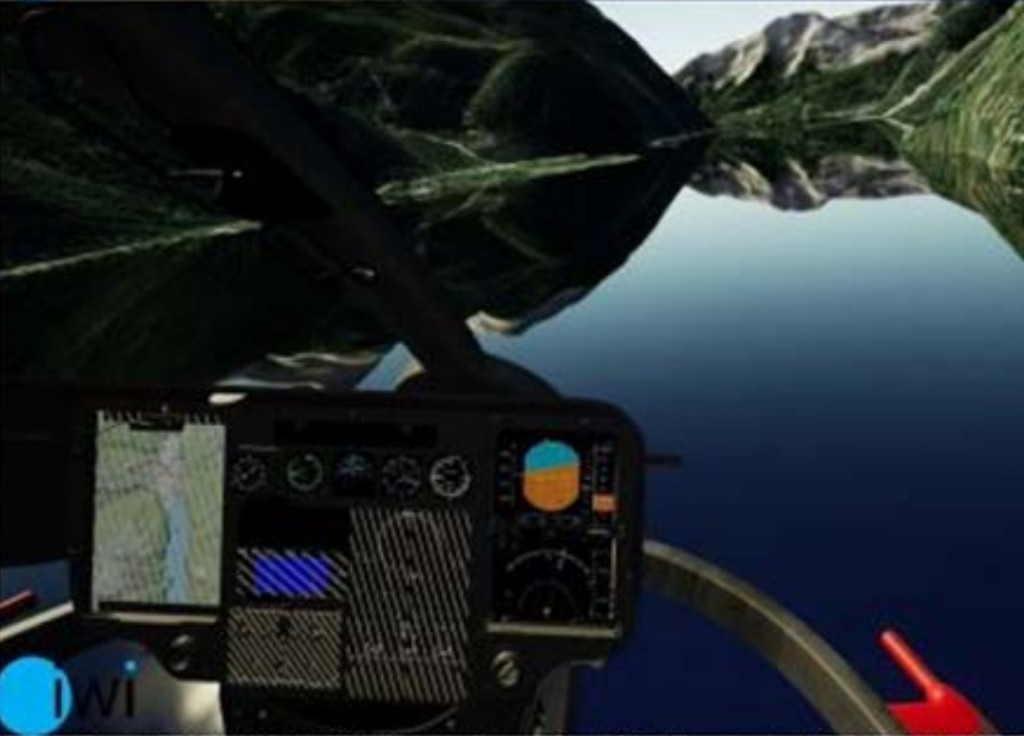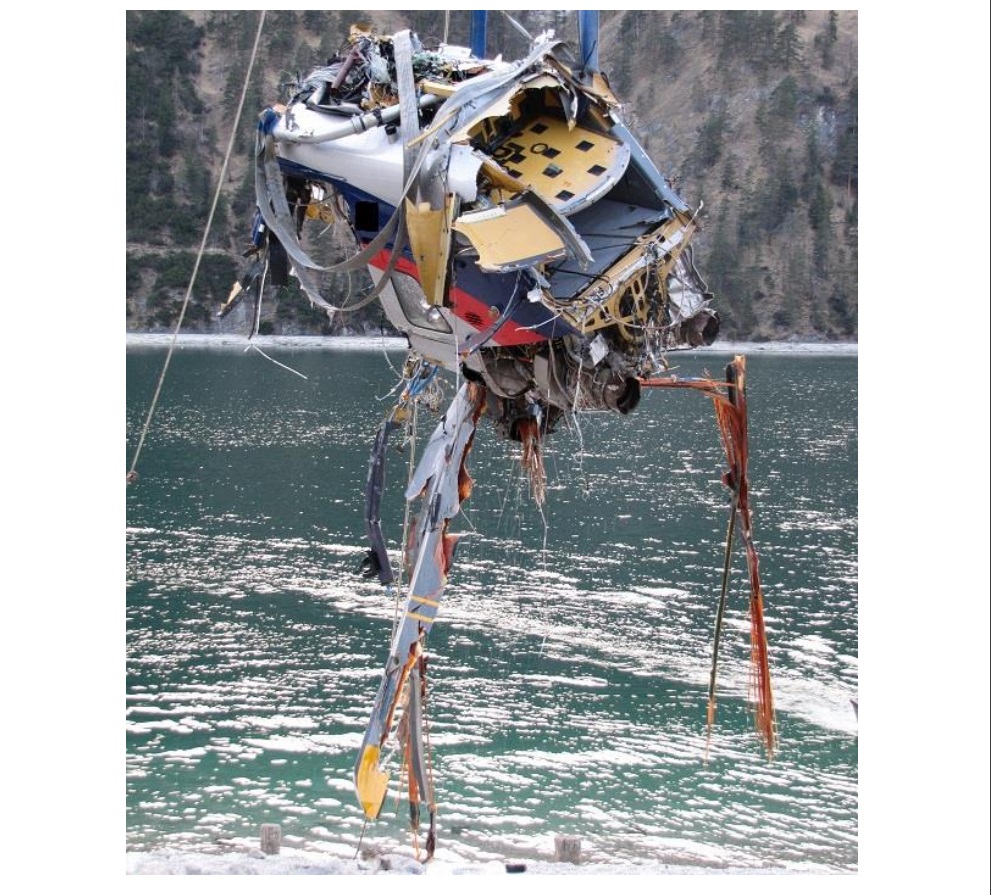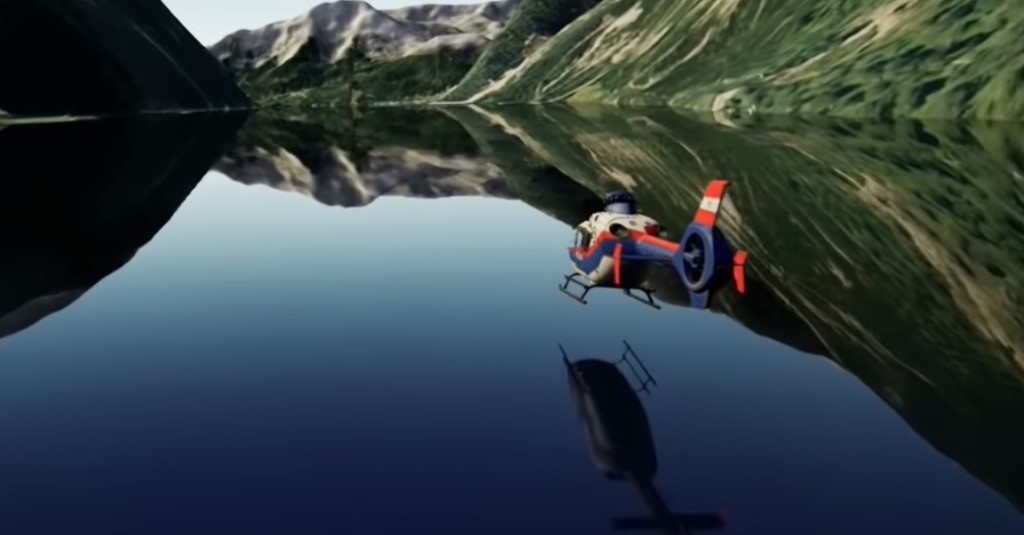Austrian Police EC135P2+ Impacted Glassy Lake
After nearly 8 years and 8 months Austrian accident investigators from the Sicherheitsuntersuchungsstelle des Bundes (SUB) have released their report into Interior Ministry Airbus Helicopters EC135P2+ police helicopter, OE-BXF, that impacted Lake Achensee on the morning of 30 March 2011. All 4 occupants were killed.
The helicopter arrived in the vicinity of the village of Achenkirch, north of the lake, just over 30 minutes after departure from Innsbruck. The weather was good and winds were calm.
It made a 270º turn in the eastern area of the village before flying south west towards the Christlum Achenkirch Achensee ski resort. The helicopter was at this time approximately of 250 to 500 ft AGL. The helicopter then flew to the south, manoeuvred hard, descended and crossed over the shore of the lake at a ground speed of c 134 kts. The helicopter impacted the lake shortly after.

Flightpath of the Austrian Police Airbus EC135P2+ OE-BXF Reconstructed from EURONAV Mission System Data (Credit: Accident Report)
The helicopter was equipped with neither an FDR nor CVR but the EURONAV mission system and aircraft Usage Monitoring System (UMS) were downloaded.
In addition, the innovative Immersive Witness Interview application from IWI was used to collate and plot the observations of three witness. This was especially valuable in reconstructing the last 9 seconds of the flight for which data was missing (although in fact the witness data was analysed by IWI even before any data had even been recovered from the aircraft).
IWI also used virtual-reality technology, including laser scanned terrain (128 million points), 0.25 m resolution imagery, cockpit instrumentation imagery and weather effects modelling (including water mirror effects) to provide investigators with other insights.
The investigation concluded the pilot misjudged height when flying low over the glassy surface of the lake. An IWI reconstruction shows the likely reflections on the lake’s surface. No operational reason was determined for the low flying. It does not appear the RADALT was referred to and procedures did not require its use.

IWI Reconstruction of Airbus EC135P2+ OE-BXF Flight: Note Striped Instruments Not Recreated (Credit: IWI via SUB Accident Report)
Safety Resources
We have previously written about other accidents where IWI has proved valuable: For Rotors Grease is the Word
A similar accident occurred in New Zealand to Hughes 369 ZK-HXZ in 2012 (discussed in an NZCAA accident report).
The FAA Seaplane, Skiplane, and Float/Ski Equipped Helicopter Operations Manual (FAA-H-8083-23) says:
Flat, calm, glassy water certainly looks inviting and may give the pilot a false sense of safety.…Unfortunately…the visual…characteristics of glassy water hold potential hazards for complacent pilots. Consequently, this surface condition is frequently more dangerous than it appears.… The visual aspects of glassy water make it difficult to judge…height above the water. The lack of surface features can make accurate depth perception very difficult, even for experienced…pilots. Without adequate knowledge of the…height above the surface, the pilot may…fly into the water at relatively high speed.… Besides the lack of surface features, the smooth, reflecting surface can lead to confusing illusions.
You may also be interested in:
- EC135P2 Spatial Disorientation Accident
- EC135P2+ Loss of NR Control During N2 Adjustment Flight
- US HEMS EC135P1 Dual Engine Failure: 7 July 2018
- Misassembled Anti-Torque Pedals Cause EC135P1 Accident
- AAIB Report on Glasgow Police EC135T2+ Clutha Helicopter Accident
- Maintenance Misdiagnosis Precursor to EC135T2 Tail Rotor Control Failure
- Accident Report: Fatal Police Helicopter Double Engine Flameout Over City Centre
- US Police Helicopter Night CFIT: Is Your Journey Really Necessary?
- HEMS S-76C Night Approach LOC-I Incident
- UPDATE 5 March 2020: HEMS AW109S Collided With Radio Mast During Night Flight
- UPDATE 2 May 2020: Sécurité Civile EC145 SAR Wirestrike
- UPDATE 6 June 2020: Fish Spotting Helicopter Strikes Glassy Sea
- UPDATE 18 July 2020: Vortex Ring State: Virginia State Police Bell 407 Fatal Accident
- UPDATE 14 November 2020: HEMS EC135T1 CFIT During Mountain Take Off in Poor Visibility
- UPDATE 31 January 2021: Fatal US Helicopter Air Ambulance Accident: One Engine was Failing but Serviceable Engine Shutdown
- UPDATE 11 December 2021: Canadian Flat Light CFIT
- UPDATE 5 August 2022: Heliski Flat Light Flight into Terrain
The European Safety Promotion Network Rotorcraft (ESPN-R) has a general helicopter safety discussion group on LinkedIn.



Recent Comments